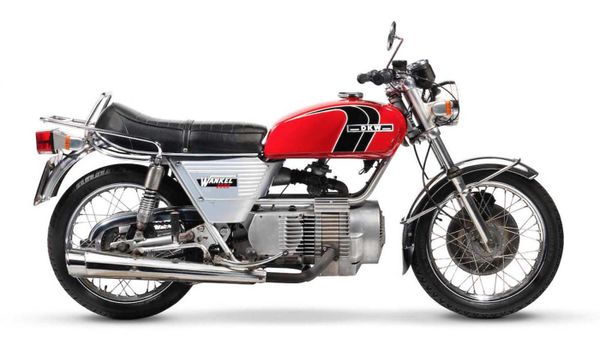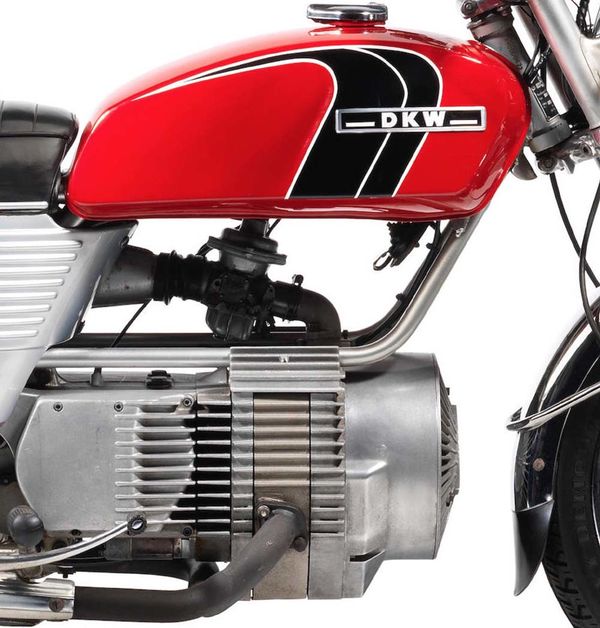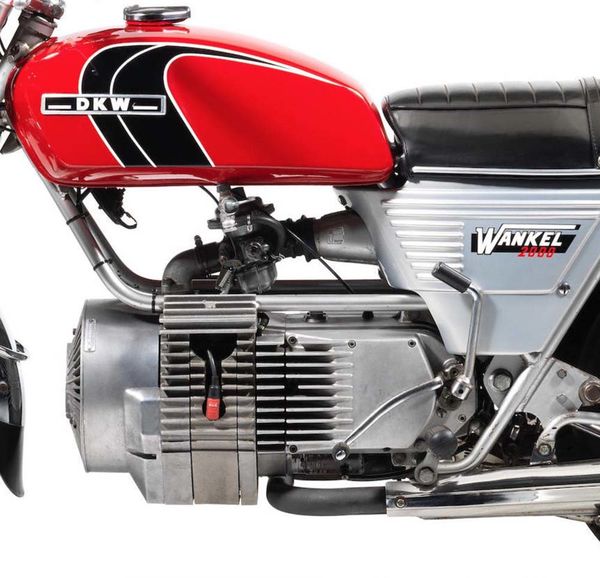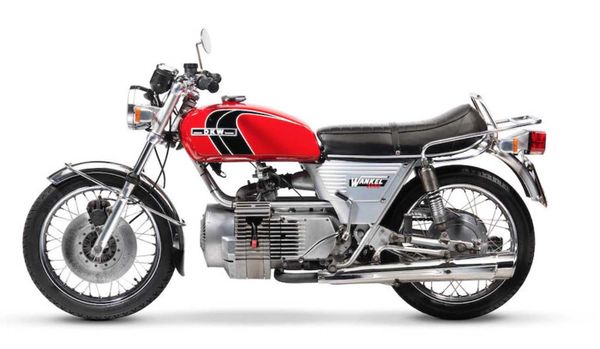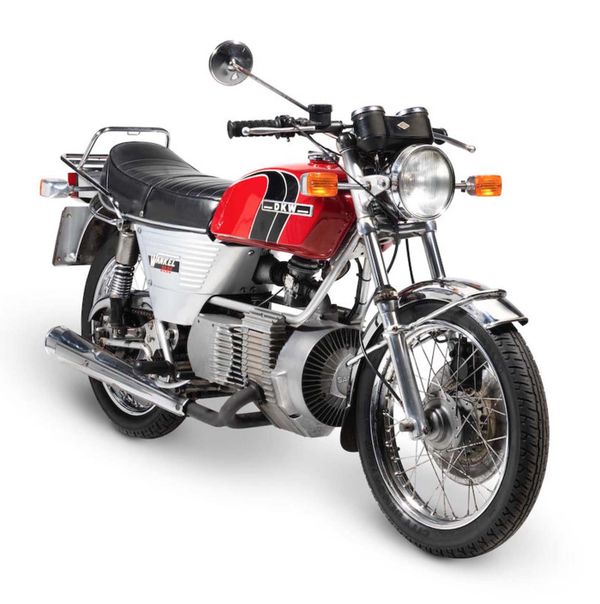DKW W2000 Rotary
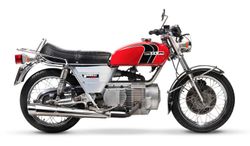 |
|
| Classic Bikes DKW W2000 Rotary | |
| Class | Classic |
|---|---|
| Weight | |
| Manuals | Service Manual |
Photos[edit | edit source]
Overview[edit | edit source]
DKW W2000 Rotary
The DKW W2000 is a rotary-engined motorcycle that was sold
under the name Hercules W-2000 in all world markets outside
the United Kingdom it was the first rotary motorcycle (in full
production) in the world and its engine would go on to form the
basis of the Norton rotary-engined motorcycles that would be
produced well into the early 1990s.
The DKW W2000 / Hercules W-2000 came about when the engineers at Fichtel &
Sach (later known as (ZF Sachs AG or just Sachs) were tasked with seeing if it
was possible to bolt a rotary snowmobile engine into a motorcycle frame. The
company had been purchased by Fichtel & Sach in 1963, and it was decided to
release this new rotary motorcycle under the Hercules name, except in the UK
where the DKW name was used for reasons that are lost to history.
The engine is an air-cooled, single-rotor 294cc Wankel unit capable of 27 to
32 hp at 6500 rpm, and the power was sent to the 6-speed wet-clutch gearbox via
a 90° bevel gear. Although rare, Wankel engines are ideal for motorcycles as
theyre almost entirely vibration free and they weigh far less than a comparable
reciprocating internal combustion engine.
The Production and Sales of the DKW W2000 / Hercules W-2000
The prototype of the Hercules W-2000 was first shown at the German trade
show Internationale Motorrad und Fahrrad-Ausstellung in 1970 where it
garnered much interest from the general public both for its unusual engine and
its unique appearance.
Production began in 1974 and ended in 1977, the production bike offered 40
mpg (US) and a top speed of 140 km/h (90 mph) with a dry weight of 173
kilograms.
Sales werent particularly brisk, and period reviews were largely negative
but many of the bikes survived because most of the people who bought them were a
little unusual, and they bought them because they loved the engineering rather
than any specific positive attribute or magazine review.
The Hercules W-2000 wouldnt die in 1977 when production ended however the
tooling was bought by Norton who had been impressed by the mule rotary
motorcycle developed by David Garside using a BSA B25 Starfire frame.
of low-volume rotary motorcycles and a series of very successful racing motorcycles including the RCW588 which won the 1992 Isle of Man Senior TT and the 1994 British Superbike Championship, a final vindication for those German engineers all the way back in the late 1960s.
In the 1960s the Wankel rotary engine must have seemed like it was poised to take over the world. The emissions concerns that would help sink the design decades later werent even a consideration at the time, and the promise of the Wankel concept seemed almost unbeatable. The engine has as very few moving parts, no cams, valves, conrods, crank shaft, or other parts youd find in a normal piston engine. The advantages of a rotary engine are its light weight, high power to weight ratio, minimal vibration, a much lower possibility of catastrophic engine failure, cheap production costs, high-RPM operation, and and a smaller engine size resulting smaller engine bay requirements. There are some downsides to the rotary engine too, namely, they consume quite a lot of fuel, they need oil added to the fuel in small amounts to lubricate the apex seals (bad for emissions), they produce lower torque figures, and apex seals can be prone to issues. There are other benefits and drawbacks of course, but this is just a basic outline for the sake of context. Source
Videos[edit | edit source]
External Links[edit | edit source]
https://silodrome.com https://silodrome.com/norton-classic-rotary/ https://silodrome.com/category/norton/
